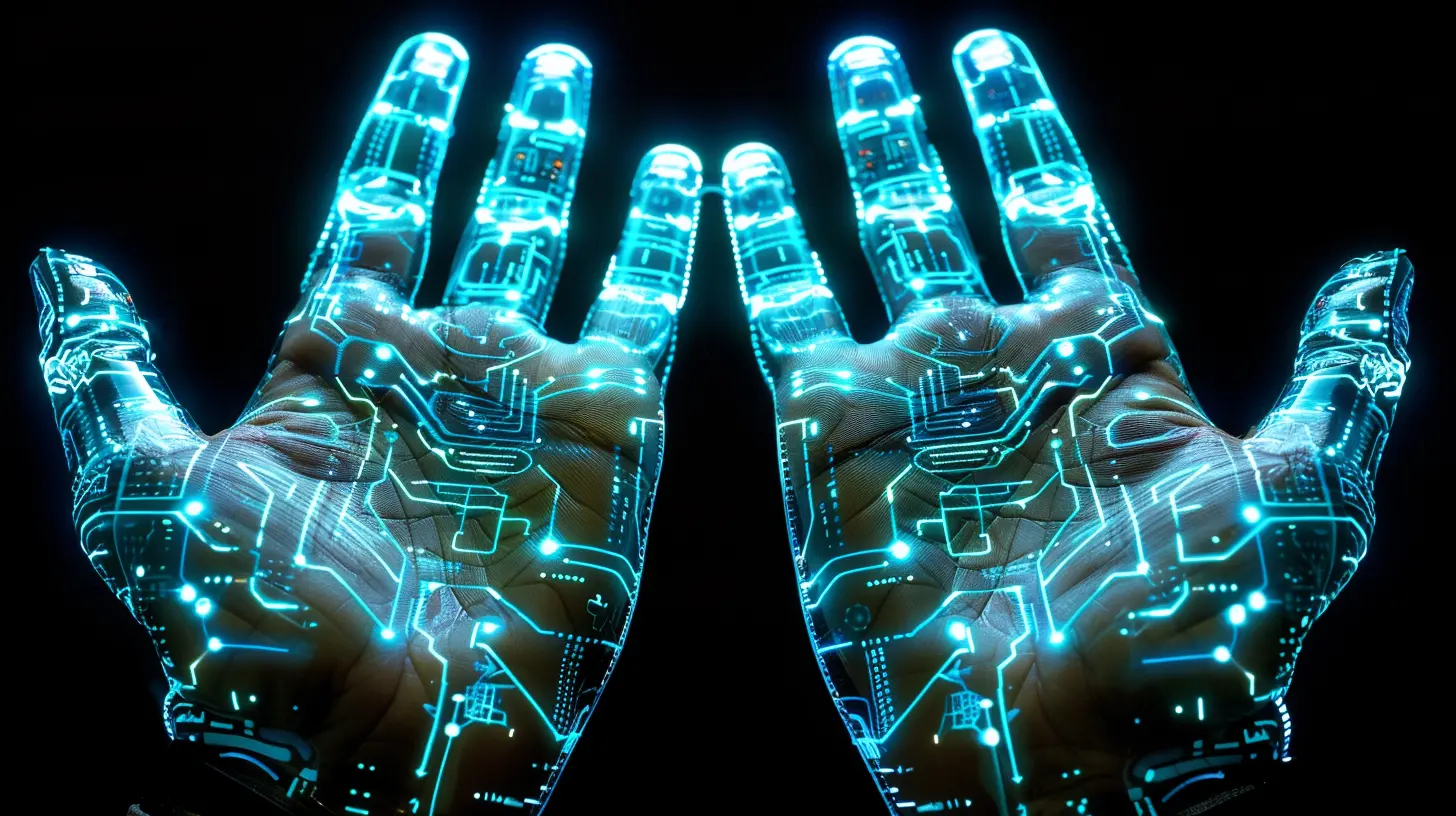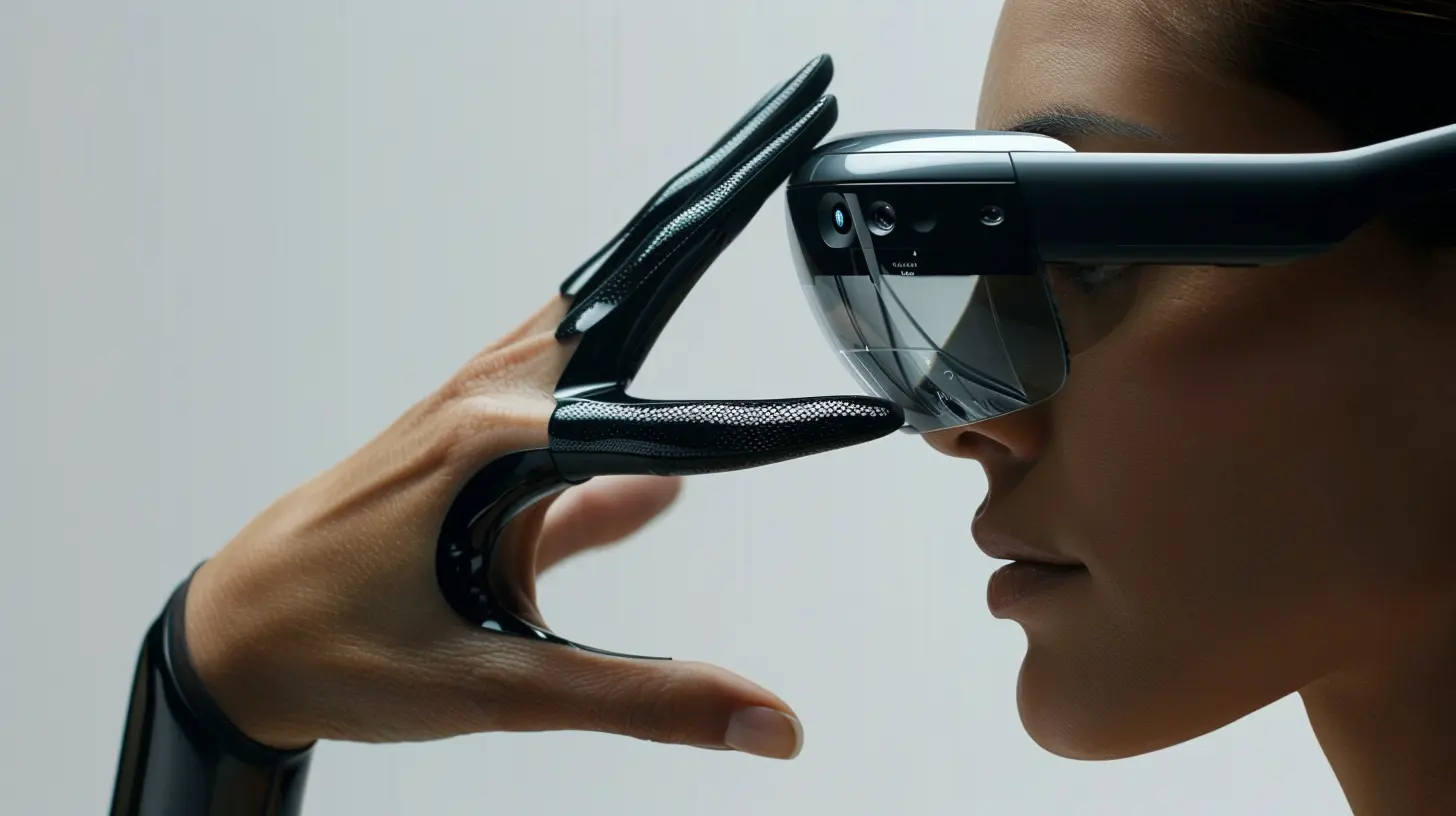Gesture Control Wearables: The Next Step in Human-Computer Interaction
20 August 2025
We live in a world where technology is evolving faster than we can keep track of. Every day, we're introduced to new gadgets, apps, and interfaces that promise to make our lives easier, more efficient, and – let’s face it – a little cooler. But one innovation that’s been steadily gaining traction is gesture control wearables. If you haven’t heard of them yet, buckle up because these might just be the future of how we interact with our devices.
Imagine controlling your smartphone, laptop, or even your smart home gadgets without lifting a finger. Well, technically, you might still be lifting a finger, but instead of touching a screen or keyboard, you're just waving it in the air. Sounds like something out of a sci-fi flick, right? But it’s very real, and it’s happening now. Let’s dive into what gesture control wearables are, how they work, and why they could be the next big thing in human-computer interaction.

What Are Gesture Control Wearables?
First things first, let’s define the term. Gesture control wearables are devices worn on the body – typically on the wrist, hand, or fingers – that detect and interpret the movements of your body to control digital systems. Think of it like a smartwatch that doesn’t just tell time or track your steps but also lets you control your TV, phone, or even your smart fridge just by moving your hand in specific ways.These wearables use a combination of sensors, such as gyroscopes, accelerometers, and sometimes even electromyography (EMG) sensors, to capture the motion of your muscles and translate it into commands your devices can understand.
Key Components of Gesture Control Wearables
- Sensors: The core of any gesture control wearable is its sensors. Accelerometers measure the speed and direction of motion, while gyroscopes track rotation. Some advanced wearables also use EMG sensors to detect electrical signals generated by muscle movements.- Algorithms: Once the sensors capture your movements, the wearable’s software uses algorithms to interpret the data. This is where the magic happens – the device translates those motions into commands like “play music,” “pause video,” or “scroll up.”
- Wireless Connectivity: Most gesture control wearables connect to your devices via Bluetooth or Wi-Fi, allowing you to interact with them remotely.

Why Gesture Control Wearables Matter
Okay, so they’re cool – but why should you care? Gesture control wearables represent a significant leap in how we interact with our technology. Up until now, most of us have been using touchscreens, keyboards, and voice commands to control our devices. Gesture control offers a new, more intuitive way to interact with the digital world, one that mirrors the way we naturally communicate with each other – through movement.More Natural Interaction
Think about it: when you're talking to someone, you don’t just use your voice – you use your hands, facial expressions, and body language to get your point across. Gesture control wearables take that same concept and apply it to how you interact with technology. Instead of using a mouse or tapping on a screen, you can simply wave your hand or flick your wrist to get things done.This type of interaction feels more seamless and intuitive, especially for tasks that require multitasking or hands-free control. For instance, imagine cooking dinner while controlling your smart home devices just by gesturing. Or picture yourself exercising, and instead of fiddling with your phone to change a song, you simply make a quick hand movement to skip the track. Pretty convenient, right?
Accessibility
Another huge advantage of gesture control wearables is their potential to improve accessibility for people with disabilities. Traditional input methods like keyboards, mice, and touchscreens can be challenging or even impossible for people with limited mobility. Gesture control wearables offer an alternative that’s easy to use and doesn’t require physical contact with a device. This could be a game-changer for those who face barriers to using conventional technology.The Hands-Free Era
We’ve already seen the rise of voice-controlled assistants like Siri, Alexa, and Google Assistant. Gesture control takes this hands-free concept even further. In situations where it's impractical to use voice commands (maybe you're in a noisy environment or don’t want to speak aloud), gestures provide a silent, discreet alternative.
How Gesture Control Wearables Work
Now that we’ve established why gesture control is such a big deal, let’s take a closer look at how these devices actually function. It’s not as complicated as you might think!Sensor Fusion
Gesture control wearables rely heavily on a concept called “sensor fusion.” This is the process of combining data from multiple sensors (like gyroscopes, accelerometers, and EMG sensors) to create a more complete understanding of what’s happening in the real world.For example, if you flick your wrist to the left, the accelerometer might detect the speed and direction of the movement, while the gyroscope tracks the rotation. The wearable’s software then combines this data to determine that you want to skip to the next song on your playlist.
Machine Learning
The real magic behind gesture control wearables lies in machine learning. These devices get smarter over time by learning your unique movement patterns. Just like how your smartphone learns to predict the words you’re likely to type, gesture control wearables can learn to recognize your personal gestures with greater accuracy the more you use them.Gesture Libraries
Most gesture control systems come with a predefined library of gestures that correspond to specific commands. For example, swiping up might scroll through a webpage, or making a fist could pause a video. Some wearables even allow you to customize these gestures to suit your needs, giving you greater control over how you interact with your devices.
The Applications of Gesture Control Wearables
The potential applications for gesture control wearables are vast. Here are just a few areas where we’re already seeing this technology make waves:Gaming
If there’s one industry that loves new tech, it’s the gaming world. Gesture control wearables have the potential to revolutionize the gaming experience by allowing players to interact with virtual environments in a more immersive way. Imagine playing a VR game where you don’t need controllers – your body movements control everything.Healthcare
In the medical field, gesture control wearables could enable surgeons to control robotic tools without having to touch anything – reducing the risk of contamination. Patients with motor impairments could also benefit from these devices for tasks like navigating their digital devices or controlling their wheelchairs.Virtual Reality and Augmented Reality
Gesture control is a natural fit for VR and AR, where traditional input methods (like keyboards and mice) don’t really make sense. In a virtual or augmented reality environment, being able to use your hands to interact with digital objects makes the experience much more immersive and intuitive.Smart Homes
As smart home technology continues to evolve, gesture control wearables could become the go-to method for controlling everything from lighting and temperature to entertainment systems and security. Forget about using an app – just wave your hand to turn on the lights or raise the thermostat.Challenges and Limitations
Of course, no technology is without its challenges, and gesture control wearables are no exception. Here are a few hurdles that need to be overcome before these devices can become truly mainstream:Accuracy
While gesture control wearables are improving, they’re not yet perfect. Misinterpreted gestures can be frustrating, especially if they result in unintended actions. For example, you might wave your hand to dismiss a notification but end up accidentally skipping a song or closing an app.Battery Life
Wearables, by nature, are small, and that means limited space for batteries. Gesture control wearables, with their constant need to track movement and process data, can drain battery life quickly. Finding a balance between functionality and battery efficiency is still a challenge for developers.Learning Curve
For some users, learning the specific gestures required to control their devices might take a little getting used to. Unlike voice commands or touchscreens, which are more intuitive, gesture control may require some practice, especially for more complex actions.
The Future of Gesture Control Wearables
Despite the challenges, the future looks bright for gesture control wearables. As sensor technology improves and machine learning algorithms become more sophisticated, these devices will only get better at understanding and interpreting our movements. In the coming years, we might even see gesture control integrated into everyday items like clothing, glasses, or even tattoos.One thing’s for sure: gesture control wearables are not just a passing fad. They represent a new, more natural way for us to interact with the digital world, and as the technology progresses, they have the potential to transform everything from how we play games to how we control our homes.
Conclusion
Gesture control wearables are more than just a futuristic gadget – they’re a glimpse into the next evolution of human-computer interaction. By allowing us to control our devices with simple movements, they offer a more natural, intuitive, and accessible way to interact with technology. While there are still some challenges to overcome, the potential applications for this technology are endless.As gesture control wearables continue to evolve, they could very well become a staple in our everyday lives, changing the way we interact with the digital world in ways we can only begin to imagine.
all images in this post were generated using AI tools
Category:
Wearable DevicesAuthor:

Michael Robinson
Discussion
rate this article
1 comments
Nicholas McGhee
Gesture control wearables represent a significant evolution in human-computer interaction, blending intuitive physical movements with digital responsiveness. As this technology matures, it will likely enhance accessibility and transform user experiences across various domains, fostering deeper engagement and interactivity.
August 30, 2025 at 2:29 AM

Michael Robinson
Thank you for your insightful comment! I completely agree that gesture control wearables have the potential to revolutionize how we interact with technology, making experiences more intuitive and accessible for everyone.


